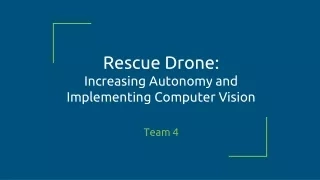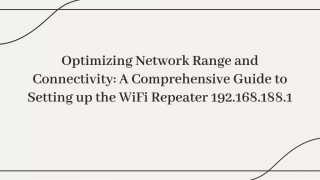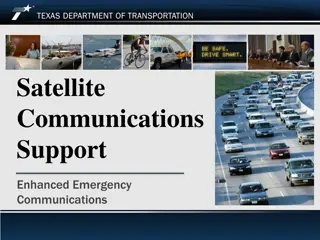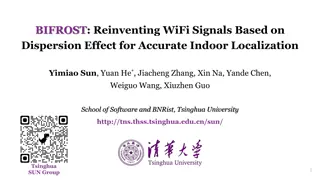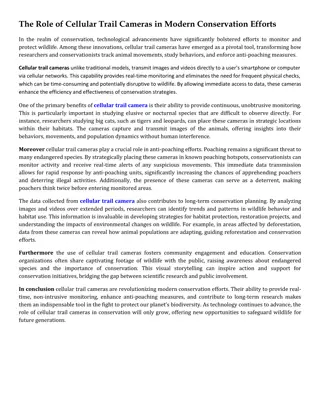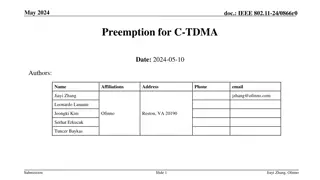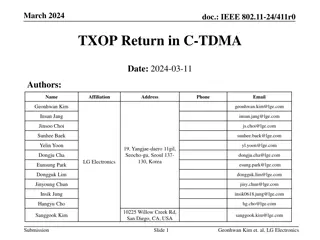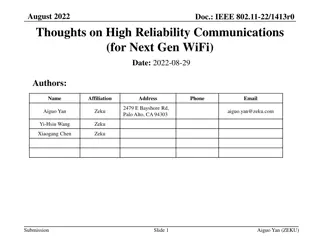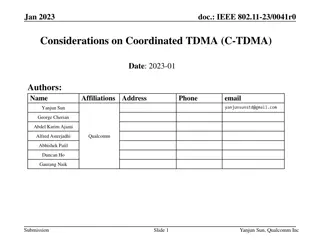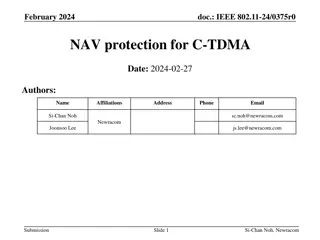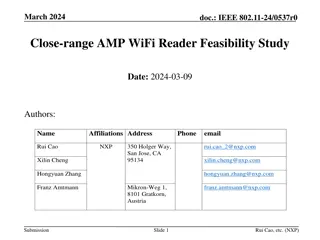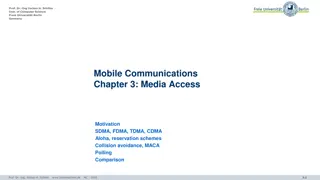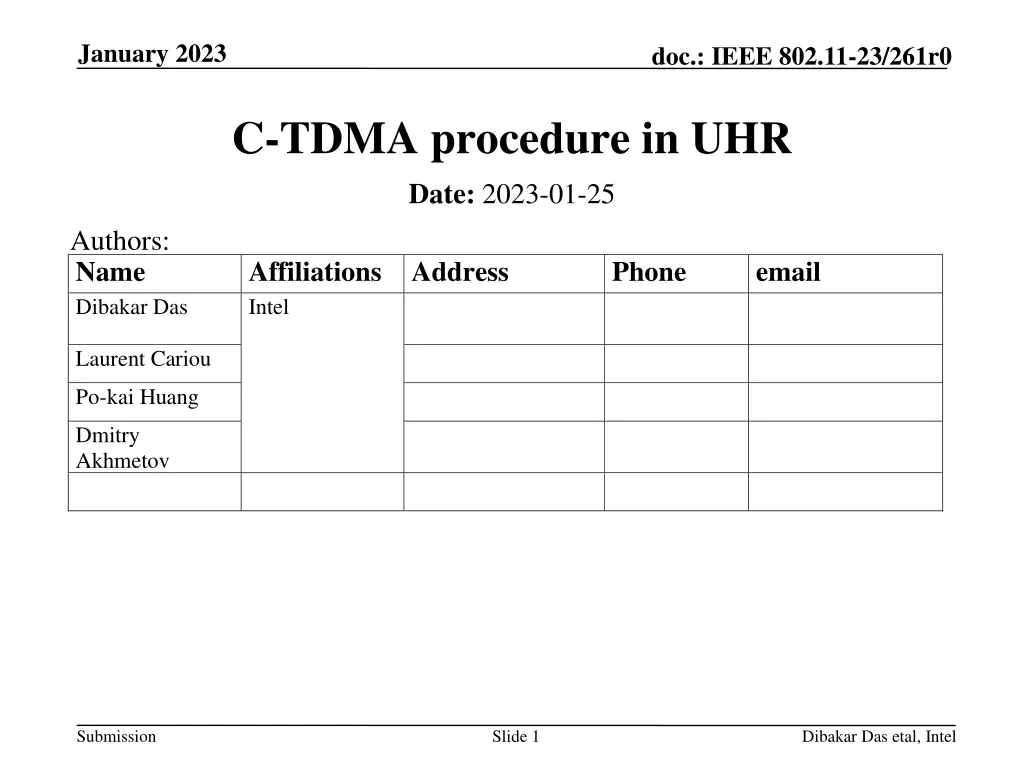
C-TDMA and TXS Procedure in UHR: IEEE 802.11-23/261r0 Details
Explore the harmonized procedure for C-TDMA and TXS in UHR within the IEEE 802.11-23/261r0 documentation. Understand how APs allocate time, handle P2P links, and manage infrastructure APs efficiently. Dive deep into the expected behaviors and common procedures for enhanced coordination.
Download Presentation

Please find below an Image/Link to download the presentation.
The content on the website is provided AS IS for your information and personal use only. It may not be sold, licensed, or shared on other websites without obtaining consent from the author. If you encounter any issues during the download, it is possible that the publisher has removed the file from their server.
You are allowed to download the files provided on this website for personal or commercial use, subject to the condition that they are used lawfully. All files are the property of their respective owners.
The content on the website is provided AS IS for your information and personal use only. It may not be sold, licensed, or shared on other websites without obtaining consent from the author.
E N D
Presentation Transcript
January 2023 doc.: IEEE 802.11-23/261r0 C-TDMA procedure in UHR Date: 2023-01-25 Authors: Name Dibakar Das Laurent Cariou Affiliations Address Intel Phone email Po-kai Huang Dmitry Akhmetov Submission Slide 1 Dibakar Das etal, Intel
January 2023 doc.: IEEE 802.11-23/261r0 Abstract Discuss a harmonized procedure for C-TDMA and TXS in UHR. Submission Slide 2 Dibakar Das etal, Intel
January 2023 doc.: IEEE 802.11-23/261r0 Introduction In UHR we are expected to discuss several variants of Multi-AP. Among them C-TDMA will likely involve an AP allocating time within its obtained TXOP to another AP. This is then similar to the Triggered TXOP Sharing (TXS) procedure in EHT wherein an AP allocates time within its obtained TXOP to an associated STA for P2P transmissions. Due to commonality of the two procedures we propose that the C-TDMA procedure, including its signaling, builds upon the TXS procedure. Benefit: have a unified way for an AP (i.e., channel access behavior of allocating AP, allocated STAs) to manage both P2P links and other infrastructure APs for procedures that involve allocating time within obtained TXOP without requiring PPDU alignment. Submission Slide 3 Dibakar Das etal, Intel
January 2023 doc.: IEEE 802.11-23/261r0 Expected C-TDMA behavior A Coordinator AP sends a Ctrl frame within its obtained TXOP to allocate time to another Coordinated AP. Whether it allocates time to more than 1 AP sequentially is TBD. During the allocated time, The coordinated AP talks to members of its own BSS. Note: ability to solicit UL PPDUs from associated STAs would require careful handling of any NAV set by the Coordinator AP. The Coordinator AP does not transmit any frame. After the allocation is over, the Coordinator AP resumes its normal PPDU transmissions in remaining TXOP. TXOP obtained by AP 1 Ctr frame to AP-2 Data to STAs associated to AP-1 Time allocated to AP-2 ... AP 1 AP 2 Data Data STA associated to AP 2 BA BA Submission Slide 4 Dibakar Das etal, Intel
January 2023 doc.: IEEE 802.11-23/261r0 Triggered TXOP Sharing procedure (overview) An infrastructure AP sends a variant of MU-RTS ( MU-RTS TXS ) frame to exactly one associated STA with Triggered TXOP Sharing Mode = 2. During the allocated time, The allocated STA can transmit to associated AP or on its P2P links. The first frame in the allocated time is a CTS frame to associated AP. The allocated STA may return unused time. The AP does not transmit any frame unless STA has returned unused time. After the allocation is over, the Coordinator AP resumes its normal PPDU transmissions in remaining TXOP. TXOP obtained by AP 1 MU-RTS TXS to STA- 1 Data to STAs associated to AP-1 Time allocated to STA-1 AP 1 STA-1 CTS Data STA-2 forming P2P link with STA-1 BA Submission Slide 5 Dibakar Das etal, Intel
January 2023 doc.: IEEE 802.11-23/261r0 Common procedure overview At high-level for both TXS (Mode 2) and C-TDMA, we need to ensure A Coordinator AP follows similar channel access rules during the allocated time as well as to regain medium at end of the allocation. A STA that s allocated time follows similar channel access rules during allocated time incl. error recovery subject to transmission restrictions due to being AP or non-AP STA. There is a way for a STA to return any unused time. There is a way for a STA to report the amount of allocation it needs. While some of the above rules for TXS may not be defined yet, we should add them in next round/release. May need to investigate additional enhancements to improve medium efficiency in absence of accurate BSR/required airtime information (e.g., allocate multiple STAs). Submission Slide 6 Dibakar Das etal, Intel
January 2023 doc.: IEEE 802.11-23/261r0 Some potential signaling design To signal the time allocation we can adapt the MU-RTS TXS frame except some considerations needed to address an unassociated AP in the User Info of the MU-RTS TXS frame. Options: define a new AP-ID similar to an AID for M-AP, or restrict usage to one AP in which case may use the RA field. Do we need additional signaling in a TXS frame to differentiate C-TDMA from TXS ? Note: if we need to allocate multiple STAs sequentially in the TXS frame, then we have enough reserved bits for it. A CTS frame can largely be used for confirmation of the allocation in C-TDMA as well similar to that in TXS if the allocation is for one user. Alternatively, only the first allocated AP sends CTS.. Submission Slide 7 Dibakar Das etal, Intel
January 2023 doc.: IEEE 802.11-23/261r0 Summary We highlight the similarity in C-TDMA and TXS and hence propose to have a common design to support them. Submission Slide 8 Dibakar Das etal, Intel

